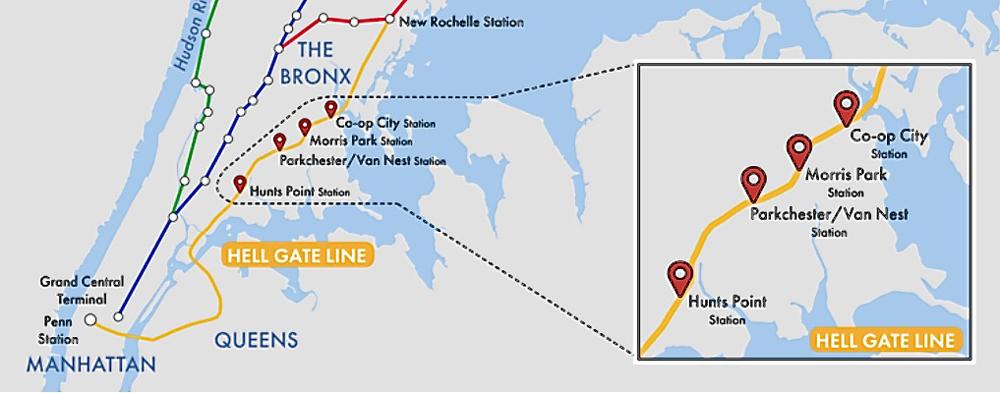Metro-North and Amtrak Face Ongoing Delays: Challenges and Solutions for Penn Station Connectivity
Metro-North Voices Concerns Over Amtrak-Related Delays at Penn Station
The Metropolitan Transportation Authority (MTA) has publicly voiced its dissatisfaction with Amtrak due to recurring delays that continue to disrupt the crucial Metro-North connection to Penn Station. These persistent interruptions have caused significant inconvenience for thousands of commuters who rely on punctual service to Manhattan’s west side, especially during rush hours. The MTA attributes these setbacks primarily to Amtrak’s operational management and coordination shortcomings, which have hindered the smooth integration of services.
According to the MTA, several factors contribute to these ongoing delays:
- Overcrowded tracks resulting from overlapping schedules between Amtrak and Metro-North trains.
- Lack of synchronized dispatching at critical entry points into Penn Station.
- Conflicts with delayed freight and long-distance trains that interfere with commuter rail timetables.
Recent data highlights the growing severity of these delays, comparing average wait times before and after service adjustments earlier this year:
| Period | Average Delay (minutes) | Peak Hour Severity |
|---|---|---|
| January – March 2024 | 7 | Moderate |
| April – May 2024 | 15 | Severe |
How Amtrak Delays Affect Commuters and Regional Transit Performance
The ongoing disruptions caused by Amtrak’s delays have had a profound impact on the daily experience of Metro-North passengers. Commuters face extended travel times, increased stress, and a higher likelihood of missing appointments or connections. This unpredictability has led to overcrowded platforms and trains during peak periods, further exacerbating passenger discomfort. Moreover, the reliability of public transit in the region is being questioned, prompting some riders to consider alternative, less eco-friendly transportation options.
From a system-wide perspective, these delays undermine the efficiency of the broader transit network. The lack of seamless coordination between Amtrak and Metro-North complicates transfer schedules and creates bottlenecks that affect both passenger and freight services. Key performance indicators illustrate the decline in service quality:
| Performance Metric | Pre-Delay Period | Post-Delay Period |
|---|---|---|
| On-Time Transfers | 92% | 67% |
| Weekly Passenger Complaints | 120 | 320 |
| Train Schedule Adjustments | Minimal | Frequent |
Root Causes of Penn Station Connection Delays: Operational Hurdles
The persistent issues at Penn Station stem from a complex mix of operational challenges that have long plagued the rail corridor. Aging infrastructure, including outdated signaling systems and limited track capacity, struggles to accommodate the volume and frequency of modern rail traffic. Maintenance delays and equipment malfunctions further disrupt service reliability. Additionally, fragmented communication and scheduling between Amtrak and Metro-North exacerbate congestion during peak travel times, leading to a cascade of delays.
Key operational obstacles include:
- Insufficient track availability to handle simultaneous Amtrak and Metro-North trains.
- Disjointed communication protocols between the two rail operators.
- Frequent signal and switch failures due to outdated technology.
- Limited turnaround and staging areas within Penn Station.
| Issue | Effect | Occurrence |
|---|---|---|
| Signal Malfunctions | Train Holding Patterns | Daily |
| Track Maintenance Delays | Reduced Speeds and Service Interruptions | Weekly |
| Scheduling Conflicts | Missed Transfers and Congestion | Several Times Weekly |
Strategies to Improve Coordination Between Metro-North and Amtrak
Resolving the ongoing friction between Metro-North and Amtrak requires a multifaceted approach focused on operational efficiency and enhanced communication. Implementing integrated scheduling platforms would enable both agencies to better align train movements, minimizing conflicts and delays. Regular coordination meetings, ideally bi-weekly, could facilitate real-time problem-solving and ensure that commuter priorities are addressed promptly. Furthermore, joint investments in infrastructure modernization-such as upgrading signal systems and improving platform accessibility-are essential to easing congestion and streamlining passenger flow at Penn Station.
Long-term success also depends on fostering a culture of collaboration, supported by transparent accountability measures and shared performance goals. The following table outlines a strategic framework designed to enhance cooperation and improve the commuter experience:
| Focus Area | Recommended Action | Anticipated Outcome |
|---|---|---|
| Accountability | Develop a joint delay tracking and reporting system | Accelerated resolution of service disruptions |
| Technology | Implement real-time, integrated scheduling tools | Reduced scheduling conflicts and improved punctuality |
| Passenger Communication | Coordinate announcements and signage across agencies | Enhanced information flow and commuter satisfaction |
- Establish joint task forces to oversee progress and recommend adjustments.
- Conduct regular commuter surveys to gather feedback and identify issues.
- Commit to shared funding for infrastructure upgrades and resilience projects.
Conclusion: Toward a More Reliable Metro-North Penn Station Connection
The ongoing dispute between the MTA and Amtrak over persistent delays continues to affect thousands of commuters daily, highlighting the urgent need for improved collaboration. As both agencies face mounting pressure to enhance coordination and accelerate infrastructure improvements, the future of the Metro-North Penn Station connection hinges on their ability to work together effectively. Stakeholders and riders alike remain hopeful that these efforts will lead to a more dependable and efficient transit experience, reinforcing New York’s position as a leader in urban transportation.













